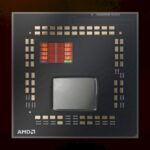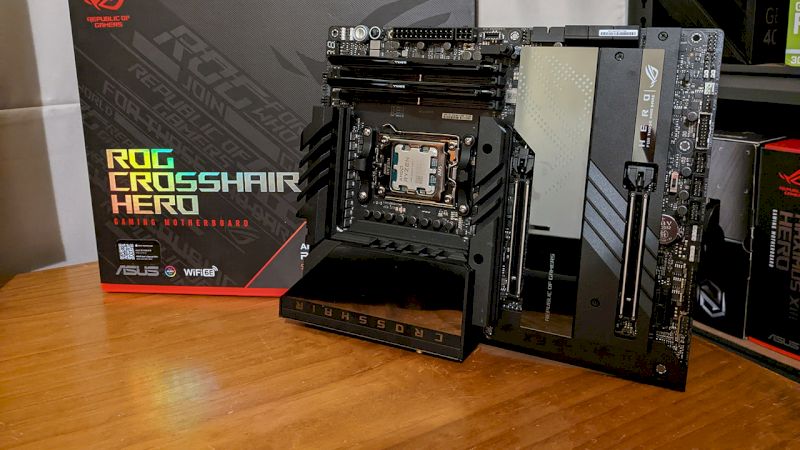
Asus’ ROG model hardly wants an introduction. Since 2006, Asus ROG motherboards have hardly ever dissatisfied, and the model certainly has probably the most loyal repeat consumers. However with premium {hardware} comes premium pricing, and the Crosshair X670E Hero is a really costly board. At $699 / £649 / AU$1,189 it is priced at ranges that had been laughable a few generations in the past.
Why is it so costly? There are just a few causes. The fallout from the pandemic, world inflation, and a powerful US greenback are partly accountable, however there’s additionally the necessity for prime quality PCBs. PCIe 5.0 signalling necessities imply the boards must be constructed to a excessive commonplace. It looks as if the times of $300 flagship boards are lengthy gone.
However that is sufficient worth speak – for now anyway. Returning to the board itself, you’d count on it to be packed to the hilt with options, and it’s for probably the most half. Its M.2 complement stands out, with a complete of 5 slots. Three of them are PCIe 5.0 appropriate, and a kind of is through a really effectively constructed PCIe 5.0 add-in card.
Throw in six SATA ports and it is a good possibility for the file hoarders.
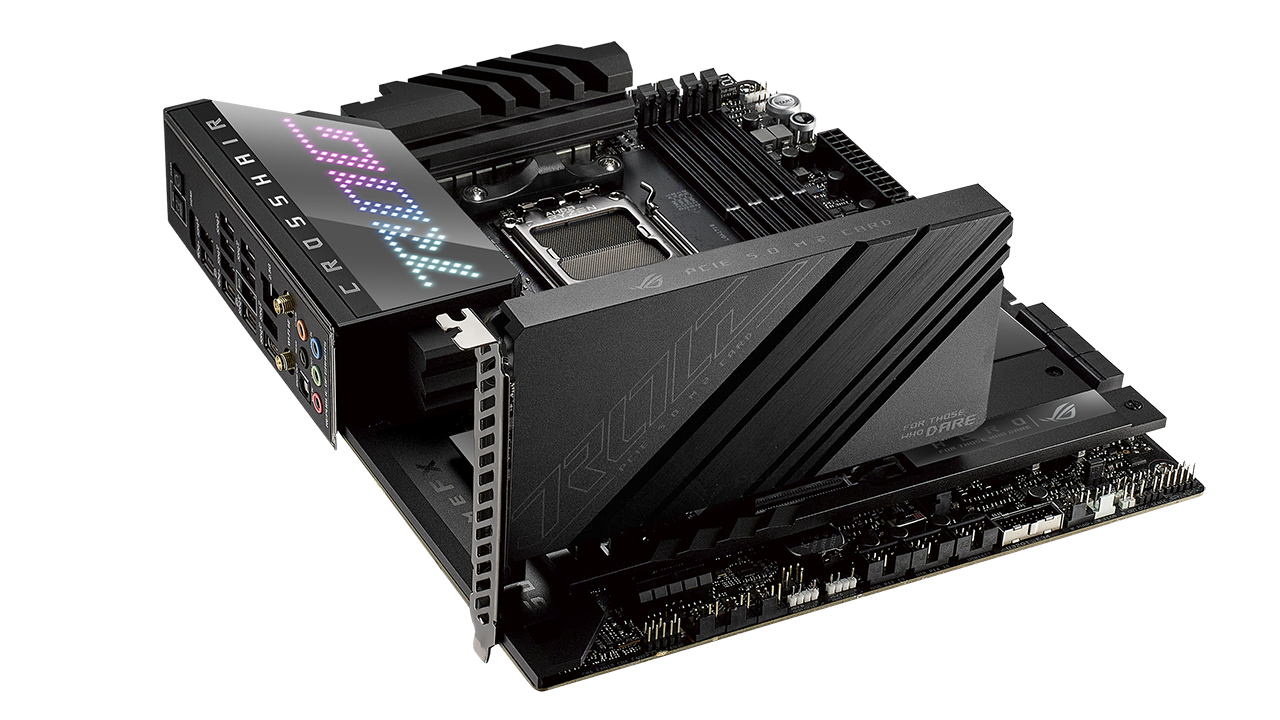
Socket: AMD Socket AM5
CPU compatibility: AMD Ryzen 7000 desktop processors
Kind issue: ATX
Reminiscence assist: As much as DDR5-6400+ (OC), As much as 128GB
Storage: 5x M.2; 6x SATA
USB: As much as 2x USB 4, 2x USB 3.2 Gen2x2, 9x USB 3.2 Gen 2, 4x USB 3.1 Gen 1, 6x USB 2.0
Show: 1x HDMI 2.1
Networking: Wi-Fi 6E; Intel 2.5G LAN
Audio: Realtek ALC4082 7.1 Channel HD Audio
Value: $699 / £649 / AU$1,189
It is a nice-looking board with a goodly dose of RGB-lit ROG branding atop the VRM heatsink. Its mirror-like center part might be utterly hidden by a big graphics card, which means it is predominantly black, and it’ll simply mix in with nearly any system theme.
Asus ROG boards all the time characteristic good VRM options, and the X670E Hero does too. It mightn’t have the outright section depend of some competing boards however do not let that trouble you. 18+2 section with 110A phases will not be pressured by a closely overclocked Ryzen 9 7950X, even with liquid nitrogen cooling.
The cooling is greater than enough too, if not fairly as spectacular as Gigabyte’s high-end boards which characteristic bigger floor areas because of finned heatsinks. They’re very solidly constructed and a 52°C load temperature when looping Cinebench R23 isn’t even remotely close to its limits. Even when future Ryzen 8000 or 9000 CPUs require 300W or extra, it is arduous to see how the X670E Hero would battle.
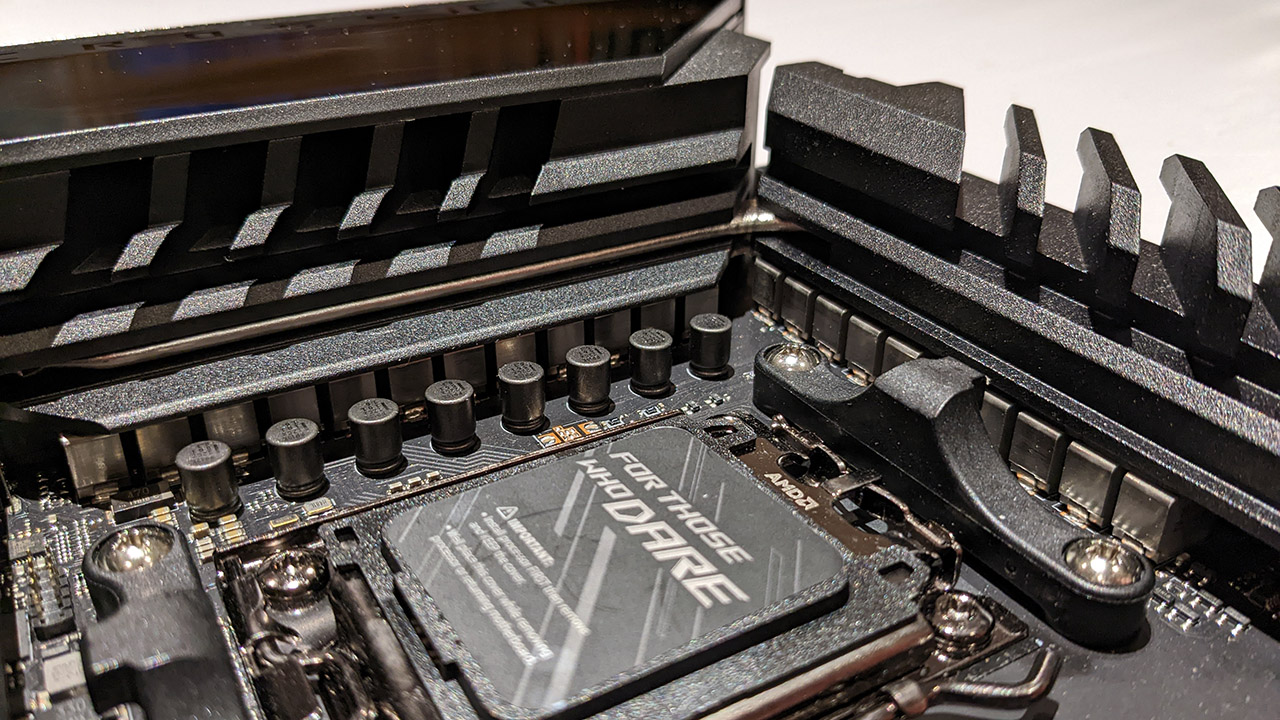
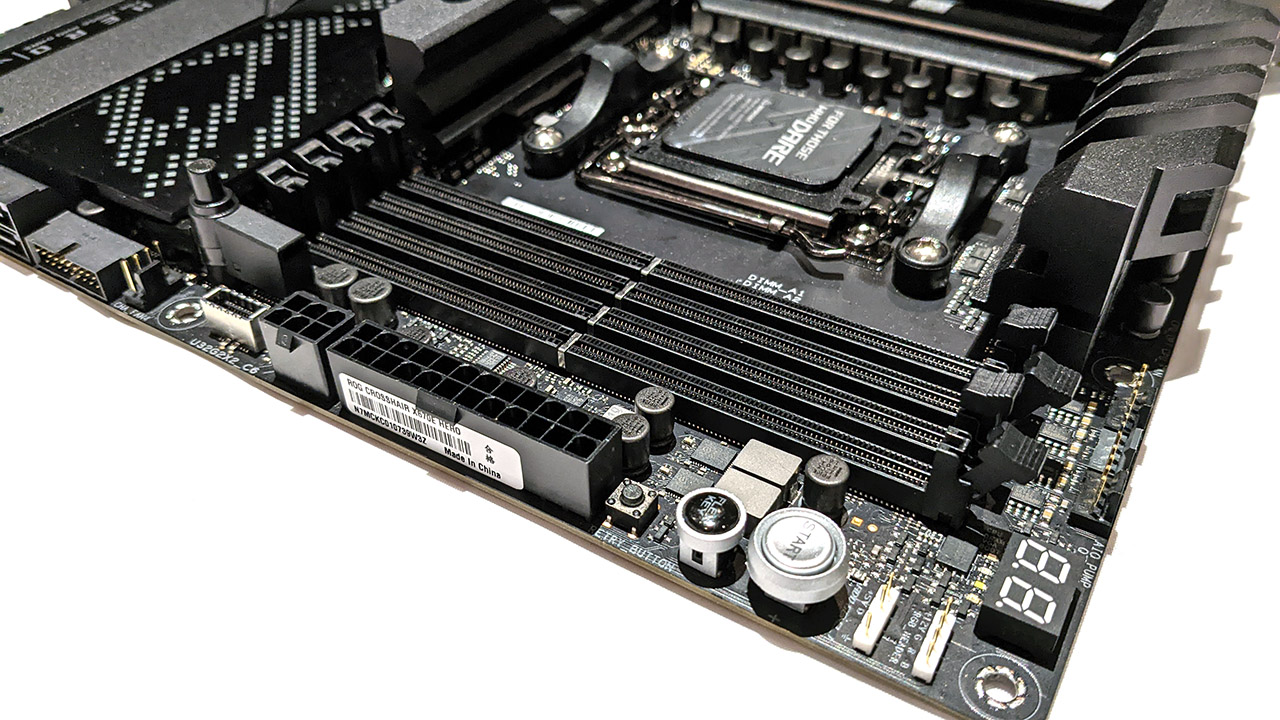



The rear I/O is an actual energy of the board, with one exception, there’s 2.5G LAN solely when it comes to its ethernet connection. At this worth, not less than 5G needs to be commonplace, with 10G anticipated. That apart, the USB complement is about nearly as good because it will get. Two USB 4 ports are joined by a Gen 3.2 Gen 2×2 port and 9 3.2 Gen 2 ports. When mixed with the interior headers, the board helps as much as 23 USB ports. That is sufficient to run your whole peripherals plus a plasma ball, Christmas tree, and head massager.
The remaining is usually commonplace stuff for a high-end board. WiFi 6E is now a normal inclusion on premium boards, and there is a HDMI port to be used with the newly launched built-in graphics of Ryzen CPUs.
The BIOS of the X670E Hero follows the identical structure that ROG boards have had for a few years. It may be a bit daunting for newcomers however it’s chock stuffed with settings. In the event you wish to mess around, the Hero in all probability isn’t going to overlook out on a lot in comparison with upcoming overclocking centered boards.
The X670E Hero definitely has probably the most mature BIOS of the 5 X670 boards I’ve examined to this point. It is freed from showstopper bugs, it boots rapidly, and the ECO and PBO enhanced modes works effectively. Extra on that under.
System Efficiency



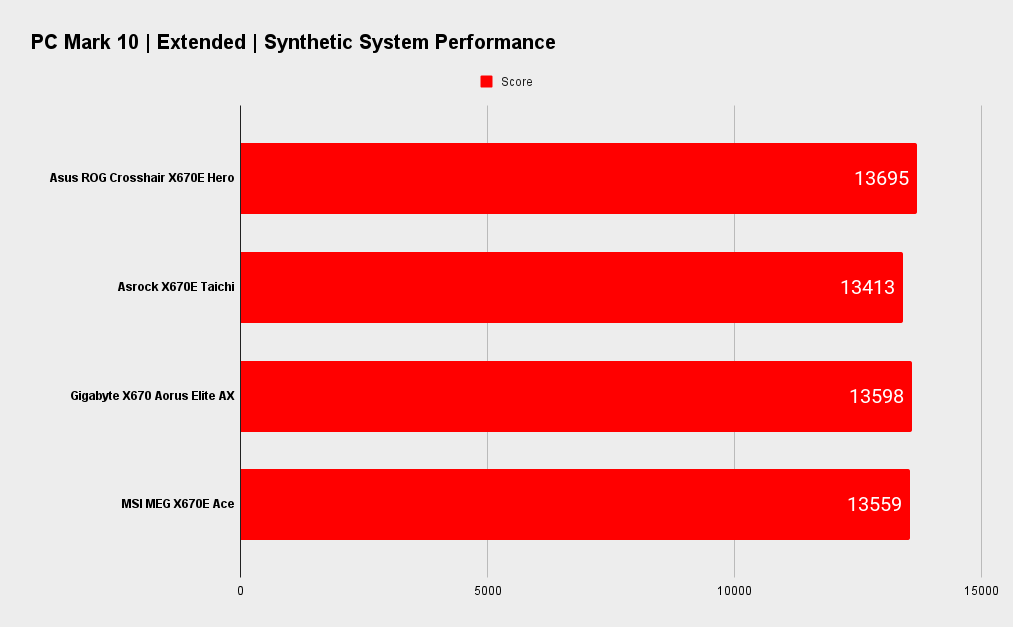


Gaming Efficiency
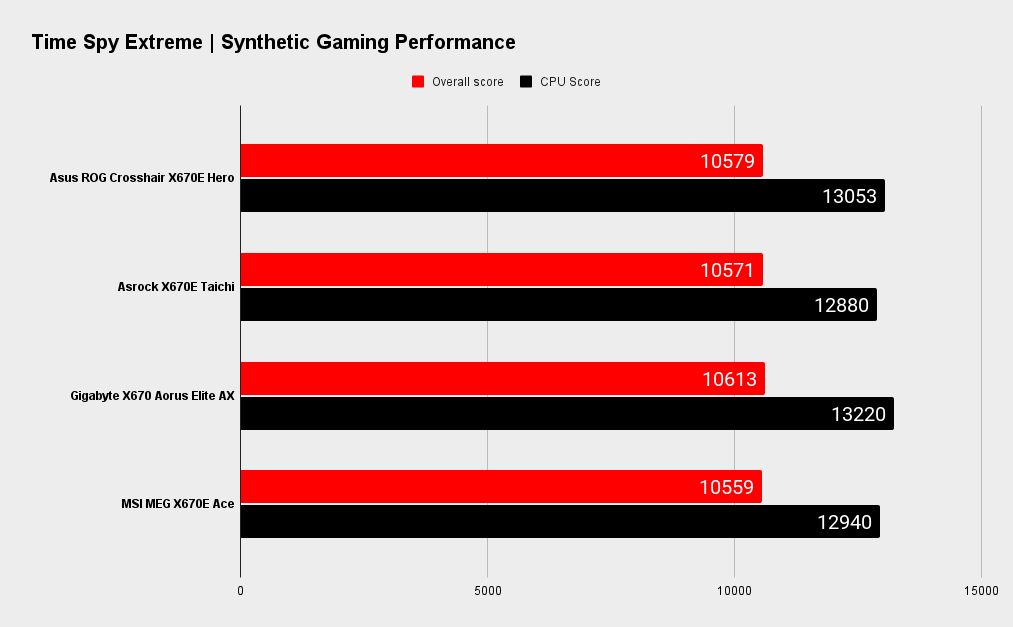
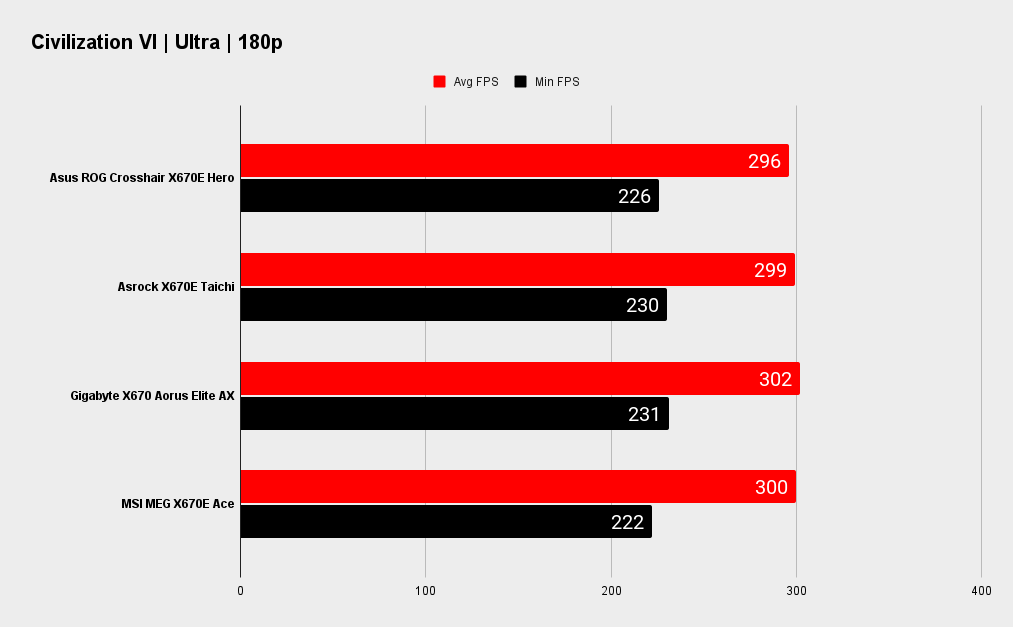
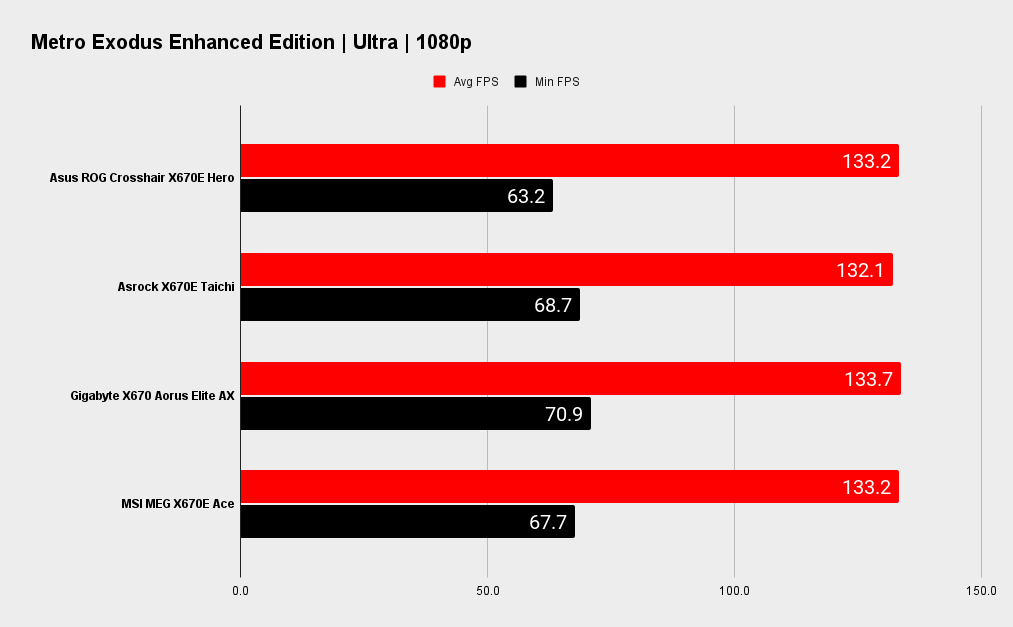

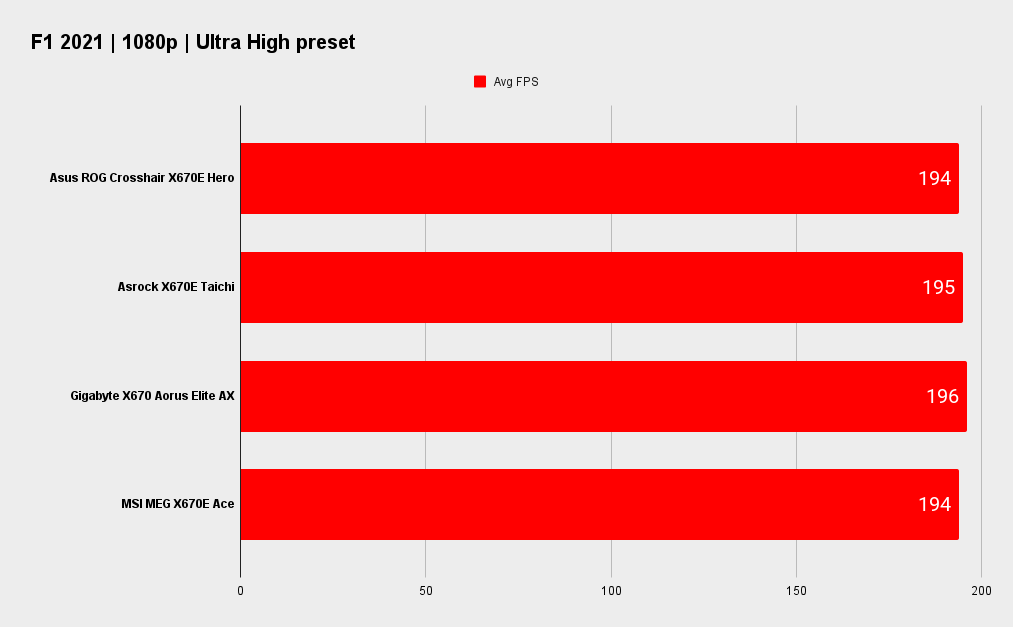
The X670E Hero typically carried out on par with the opposite boards I’ve examined thus far. Really, it is a bit of shocking to not see extra outlier outcomes given the model new nature of the platform. There’s certainly room for some AGESA tweaks and optimization. Maybe we’ll see some efficiency positive factors because the BIOS groups be taught to extract that final 1 or 2% of efficiency.
You may’t learn a lot into outcomes that fall inside a margin of error. A subtiming right here or there, Home windows deciding to do considered one of its million background processes, or a tiny little bit of throttling because the 7950X touches its 95°C restrict can all have an effect on outcomes with small margins like these.


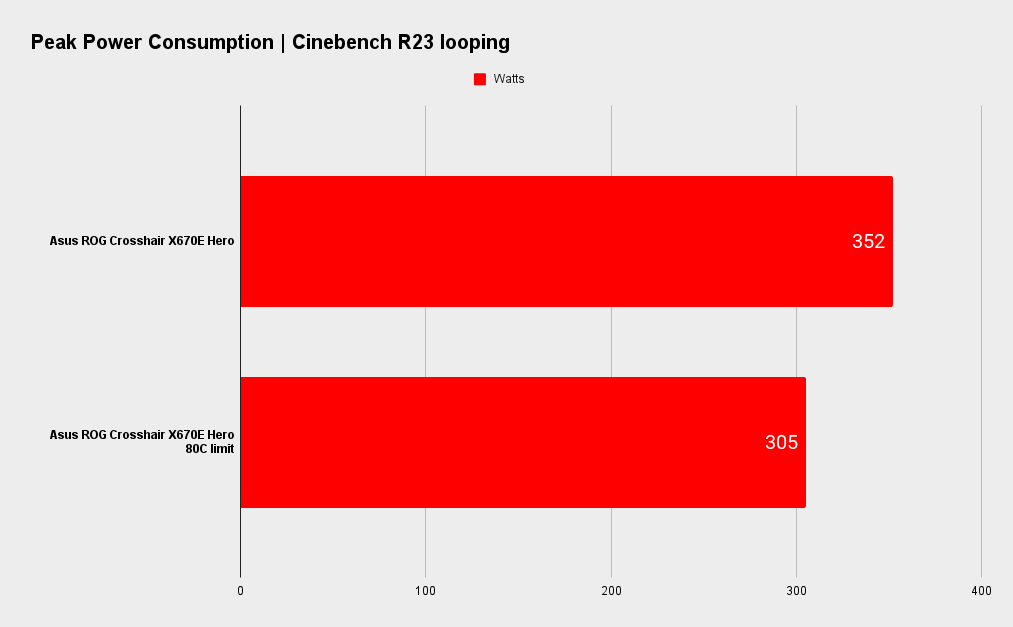
CPU: AMD Ryzen 9 7950X
Graphics: Zotac GeForce RTX 3080 Ti AMP Holo
RAM: 2x 16GB G.Talent Trident Z5 DDR5-6000 C30
Storage: 2TB Seagate FireCuda 530
Cooling: Cooler Grasp PL360 Flux 360mm AIO
PSU: Corsair AX1000
Slightly than spend time on overclocking, and primarily losing time on it because the 7950X is cooling restricted, I needed to check out Asus’ new PBO Enhancement mode within the 0705 BIOS. It may be discovered within the Excessive Tweaker menu, as proven within the picture above.
You is perhaps accustomed to AMD’s ECO mode which lets you set a TDP restrict. Asus’ mode units a temperature restrict which I imagine is a greater technique than utilizing TDP because it’s helpful it doesn’t matter what cooler you utilize. You may select 90°C, 80°C or 70°C. I selected 80°C. At this setting the calls for on my 360mm AIO cooler had been noticeably decrease. The followers merely did not have to spin up as a lot when in comparison with the default 95°C restrict {that a} 7950X can and can hit.
The outcomes are shocking. Utilizing Cinebench R23, you possibly can see the 7950X scores 37129 in comparison with the 38384 at inventory settings. That is a drop, certain, however it additionally delivers an influence saving. On the 80°C restrict the take a look at system pulled a most of 305W beneath an all-core load. That compares to the 352W at auto settings, which is sort of a 50W saving.
In the event you’re utilizing a 7700X or 7600X, you possibly can count on the PBO enhanced modes to ship efficiency nearer to the inventory settings. In keeping with Asus, a 7600X at 70°C will see subsequent to no efficiency loss.
The Asus Enhanced PBO modes and AMD’s ECO modes are glorious options in my view. In the event you do not thoughts sacrificing a largely intangible few % of efficiency, you’ll be rewarded with a big drop in temperatures and energy consumption. I heartily advocate checking it out and seeing for those who can actually see the efficiency distinction.

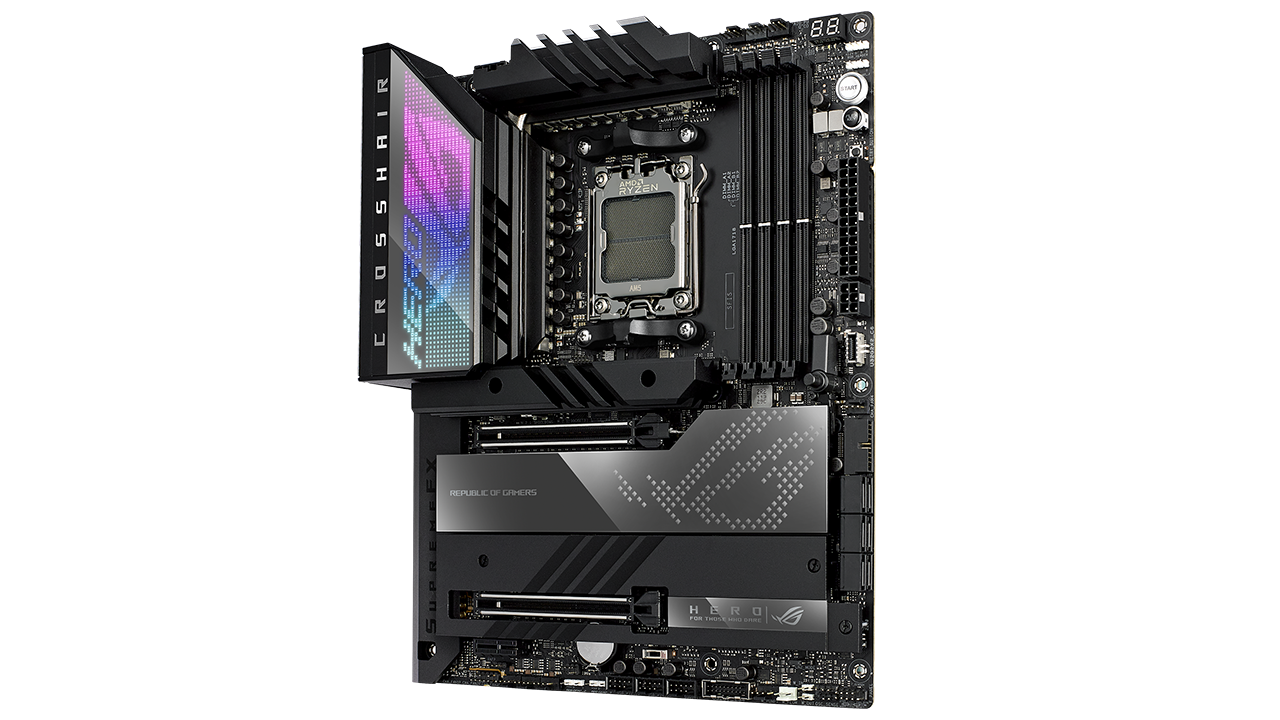
Asus normally comes out the gates effectively when a brand new CPU and platform is launched, and that is once more the case right here. The BIOS feels mature, and although we’ve not had an opportunity to essentially delve into issues like reminiscence overclocking and PBO, the boot time and reminiscence compatibility appear to be good.
The Asus ROG Crosshair X670E Hero is a stable providing, however that worth!?
The Asus ROG Crosshair X670E Hero is a stable providing, however that worth!? In fact, wider financial issues and provide chain points bear a number of the blame, however at $699 / £649 / AU$1,189, that is an costly providing nonetheless you have a look at it. Particularly when the meat of the system efficiency metrics is virtually similar throughout the boards I’ve examined.
Although for those who don’t thoughts the shortage of 5G or 10G Ethernet, you’ll be rewarded with a stable, dependable, and well-built board that can certainly final you thru Zen 5 and 6 upgrades. No less than that is one strategy to attempt to get your cash’s value.
